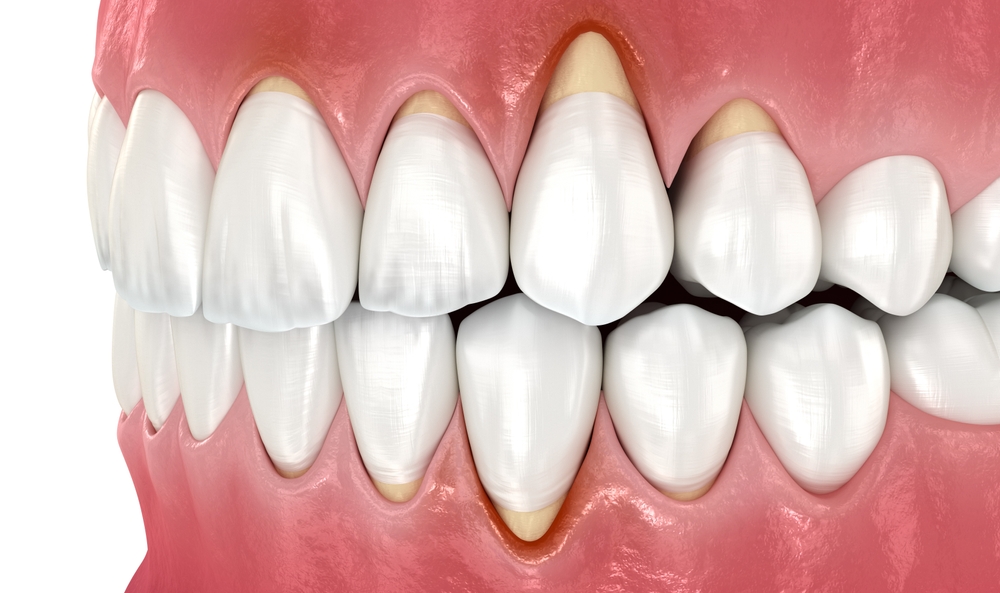Understanding Osseous Surgery: A Guide to Healthier Gums
A healthy smile is more than just bright, perfectly aligned teeth. Gum health plays a significant role in overall oral well-being, and addressing serious gum issues requires specialized care. One such procedure that can restore dental health is osseous surgery. If you’ve been advised to undergo this treatment or want to better understand it, you’re in the right place.
This guide will break down Explore osseous surgery for healthier gums: learn who needs it, benefits, and recovery steps. Trust Smile Perfection Dental & Braces for expert care.
step-by-step. We’ll cover what it is, who needs it, its benefits, and what to expect during and after the procedure. Plus, we’ll spotlight how Smile Perfection Dental & Braces delivers exceptional care when it comes to gum health.
The Importance of Gum Health
Your gums do more than frame your teeth for a beautiful smile; they protect the sensitive tissues and bone that anchor your teeth in place. When your gum health isn’t prioritized, problems can arise that don’t just affect your mouth but your entire body. Poor gum health has been linked to systemic conditions, including heart disease and diabetes.
Common Gum Issues
The two most common gum problems are gingivitis and periodontitis. While gingivitis is a milder form of gum disease involving irritation, redness, and swelling, periodontitis is a more severe condition where the gums pull away from the teeth. This creates pockets that become infected, destroying gum tissue and the bone underneath. When periodontitis progresses unchecked, tooth loss can occur.
Introduction to Osseous Surgery
For advanced cases of periodontitis, routine scaling and root planing may not be enough to restore oral health. That’s when osseous surgery becomes a viable option. This specialized surgical procedure is designed to reshape damaged bone and repair the gum surrounding affected teeth, halting the progression of gum disease.

Osseous Surgery
What Is Osseous Surgery?
Osseous surgery isn’t just a solution for discomfort or cosmetic concerns; it’s a powerful tool to regain control over severe gum disease. Here’s what you need to know about the procedure.
Defining Osseous Surgery
At its core, osseous surgery is a targeted treatment that reshapes and restores the bone structure damaged by periodontal disease. During the procedure, diseased tissue and bacteria-filled pockets are removed, and the underlying bone is smoothed to promote better healing and reattachment of the gum tissue. The ultimate goal is to restore function, save teeth, and allow long-term maintenance of oral hygiene.
Types of Osseous Procedures
While periodontal osseous surgery focuses on reshaping bone, it’s not one-size-fits-all. Options may include:
- Flap surgery: Gums are lifted to remove tartar and bacteria from deep pockets, followed by contouring of the bone.
- Bone grafting: Used when bone loss is so severe that structural support must be rebuilt.
Your dentist will determine the best approach based on your condition.
When Is It Necessary?
Osseous surgery is often reserved for severe cases of periodontitis, particularly when:
- Deep pockets prevent effective cleaning.
- Supporting bone has eroded significantly.
- Non-surgical treatments have failed to improve the condition.
If gum disease is left untreated, you risk tooth loss and broader health complications, underscoring the importance of prompt intervention.
Who Needs Osseous Surgery?
Knowing when and why this surgery might be necessary can help you take timely action.
Identifying Candidates
A recommendation for osseous surgery typically follows a thorough periodontal evaluation, which includes:
- Measuring pocket depths around teeth.
- Taking dental X-rays to assess bone loss.
- Examining the gums for signs of inflammation, bleeding, or infection.
Symptoms and Conditions
Key signs that you might be a candidate include:
- Persistent bad breath.
- Receding gums that expose tooth roots.
- Loose or shifting teeth.
- Bleeding, swollen, or painful gums.
These symptoms may point to advanced gum disease requiring intensive intervention.
Risk Factors
Certain factors can increase your likelihood of needing osseous surgery:
- Smoking weakens gums and slows healing.
- Diabetes makes you more prone to infections.
- Genetics can predispose individuals to periodontal issues.
Understanding these risks can motivate preventative care and early treatment.

Periodontal Osseous Surgery
Benefits of Osseous Surgery
While surgery may sound daunting, the results are often life-changing. Here’s why this procedure offers significant value.
Restoration of Gum and Bone Health
Periodontal disease doesn’t just harm your gums; it actively damages the bone supporting your teeth. Osseous surgery works to eliminate diseased pockets, regenerate healthy tissue, and reshape the bone, giving your gums a chance to reattach properly. This restoration can not only save your teeth but improve the appearance of your smile.
Prevention of Tooth Loss
When untreated, advanced gum disease leads to tooth instability and, eventually, tooth loss. By addressing the root cause of bone and tissue loss, osseous surgery plays a critical role in preventing further damage and preserving your natural teeth. This intervention ensures long-term oral health and a more stable dental foundation.
Improved Oral Hygiene
After surgery, your gums’ natural contours are restored, making it far easier to maintain a proper cleaning regimen. Brushing and flossing become more effective, reducing your risk for future issues and promoting overall dental health. Improved hygiene helps prevent the recurrence of gum disease and supports a healthier, brighter smile.
What to Expect During Osseous Surgery
Understanding what the procedure entails can help ease anxiety and enable you to prepare better.
Pre-Surgical Preparations
Before surgery, you’ll meet with your dentist or periodontist to review imaging results and oral health history. They may recommend:
- Professional cleaning to remove surface plaque.
- Discontinuing certain medications or smoking.
Your dentist will also discuss what steps to follow leading up to your surgery day.
Step-by-Step Procedure Description
- Anesthesia: The procedure starts with administering a local anesthetic to numb the surgical area. This ensures you remain comfortable throughout the process and do not experience any pain.
- Incisions: Small, precise incisions are made in the gum tissue to access the affected bone and periodontal pockets. This step allows the dentist to work directly on the diseased area.
- Tissue Removal: Once the site is exposed, diseased tissue, plaque, and harmful bacteria are carefully removed. This step is crucial for reducing infection risks and promoting overall oral health.
- Bone Contouring: The exposed bone is smoothed and reshaped to eliminate defects caused by disease. Contouring ensures a stable foundation for gum reattachment and enhances oral structure.
- Closure: Finally, the gum tissue is stitched back into place to protect the treated area. Proper closure is vital for healing and allows the gums to reattach effectively to the bone.
The procedure typically lasts 1-2 hours, depending on the extent of the damage.
Duration and Recovery Time
Most patients can go home the same day as the surgery. While initial recovery may take 1-2 weeks, full healing often takes several months. Your dentist will monitor progress through follow-up visits.
Post-Operative Care and Recovery
Recovery begins the moment the surgery ends. By following your dentist’s guidelines, you can ensure smooth healing and the best possible results.
Immediate Aftercare Instructions
- Pain Management: Over-the-counter medications or prescribed painkillers can alleviate discomfort.
- Dietary Restrictions: Stick to soft foods like soups and smoothies for the first few days.
- Hygiene Practices: You may be instructed to use antimicrobial rinses instead of brushing near the surgical site initially.
Long-Term Recovery Timeline
Over weeks and months, gum tissue will gradually heal and reattach to the bone. Here’s what to expect:
- First week: Swelling, mild bleeding, and tenderness are common.
- Week 2 onward: Gums begin stabilizing, and you can slowly return to normal oral hygiene practices.
- 3-6 months: Full recovery occurs as the bone regenerates and gums settle.
Monitor your mouth for signs of complications, such as excessive swelling or discharge, and notify your dentist if anything seems amiss.
Follow-Up Appointments
Consistent follow-ups allow your dentist to monitor your healing, remove sutures if necessary, and identify any lingering concerns. These appointments are vital for ensuring proper recovery, addressing complications early, and making adjustments to your treatment plan for optimal long-term oral health.

Gum Osseous Surgery
Potential Risks and Complications
Though osseous surgery is generally safe, it isn’t without risks.
Common Risks
Mild complications may include:
- Bleeding during or after surgery.
- Temporary sensitivity in teeth and gums.
- Low-grade infection at the surgical site.
Long-Term Complications
Rarely, patients may experience:
- Rejection of bone grafts if used.
- Permanent changes in bite alignment.
Open communication with your dental team is key to addressing complications early and avoiding long-term issues.
Patient Responsibility
Ultimately, the success of osseous surgery partly lies in your hands. Following post-operative care instructions, avoiding smoking, maintaining proper oral hygiene, and attending all scheduled dental visits are crucial steps. These habits significantly enhance healing, prevent infections, and ensure long-term positive outcomes for your oral health.
Smile Perfection Dental & Braces Approach
At Smile Perfection Dental & Braces, we’re dedicated to providing exceptional care for patients requiring osseous surgery. Here’s what sets us apart:
Commitment to Patient Care
Your oral health isn’t just a priority; it’s a partnership. At Smile Perfection Dental & Braces, we guide you through every step of your treatment journey, ensuring you’re fully informed and comfortable. Our team takes time to understand your concerns, fostering trust and building a personalized plan for your care.
Experienced Specialists
Our team includes skilled periodontists with extensive experience in performing osseous surgeries. Using precision techniques and advanced technology, we tailor every treatment to meet specific patient needs. This personalized approach helps to ensure optimal outcomes, reduce discomfort, and accelerate recovery. You’re in the hands of highly trained, compassionate professionals.
Patient-Centric Philosophy
At Smile Perfection Dental & Braces, your comfort and education are always our priorities. From your first dental consultation through post-surgery follow-ups, we ensure you feel confident in your care. We believe informed patients achieve the best results and are dedicated to answering every question you may have throughout the process.
Conclusion
Osseous surgery is a critical procedure for those facing severe gum disease, offering a pathway to healthier gums, stronger teeth, and improved overall wellness. By addressing the damage caused by periodontitis, this surgery helps restore your smile while preventing further complications.
If you’re experiencing symptoms like bleeding gums, gum recession, or persistent bad breath, don’t wait to seek professional advice. The friendly and experienced team at Smile Perfection Dental & Braces is here to help. Schedule a consultation today to discuss your gum health and discover how our personalized care can support your oral health goals.
https://www.google.com/maps?cid=9730495894556061815
